-
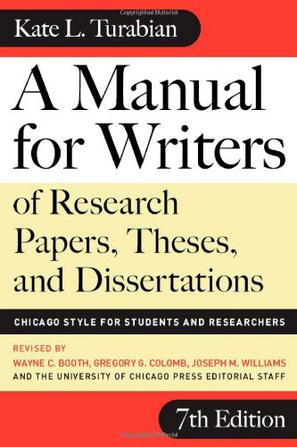
A Manual for Writers of Research Papers, Theses, and Dissertations, Seventh Edition
Dewey. Bellow. Strauss. Friedman. The University of Chicago has been the home of some of the most important thinkers of the modern age. But perhaps no name has been spoken with more respect than Turabian. The dissertation secretary at Chicago for decades, Kate Turabian literally wrote the book on the successful completion and submission of the student paper. Her Manual for Writers of Research Papers, Theses, and Dissertations , created from her years of experience with research projects across all fields, has sold more than seven million copies since it was first published in 1937. Now, with this seventh edition, Turabian’s Manual has undergone its most extensive revision, ensuring that it will remain the most valuable handbook for writers at every level—from first-year undergraduates, to dissertation writers apprehensively submitting final manuscripts, to senior scholars who may be old hands at research and writing but less familiar with new media citation styles. Gregory G. Colomb, Joseph M. Williams, and the late Wayne C. Booth—the gifted team behind The Craft of Research —and the University of Chicago Press Editorial Staff combined their wide-ranging expertise to remake this classic resource. They preserve Turabian’s clear and practical advice while fully embracing the new modes of research, writing, and source citation brought about by the age of the Internet. Booth, Colomb, and Williams significantly expand the scope of previous editions by creating a guide, generous in length and tone,to the art of research and writing. Growing out of the authors’ best-selling Craft of Research , this new section provides students with an overview of every step of the research and writing process, from formulating the right questions to reading critically to building arguments and revising drafts. This leads naturally to the second part of the Manual for Writers , which offers an authoritative overview of citation practices in scholarly writing, as well as detailed information on the two main citation styles (“notes-bibliography” and “author-date”). This section has been fully revised to reflect the recommendations of the fifteenth edition of The Chicago Manual of Style and to present an expanded array of source types and updated examples, including guidance on citing electronic sources. The final section of the book treats issues of style—the details that go into making a strong paper. Here writers will find advice on a wide range of topics, including punctuation, table formatting, and use of quotations. The appendix draws together everything writers need to know about formatting research papers, theses, and dissertations and preparing them for submission. This material has been thoroughly vetted by dissertation officials at colleges and universities across the country. This seventh edition of Turabian’s Manual for Writers of Research Papers, Theses, and Dissertations is a classic reference revised for a new age. It is tailored to a new generation of writers using tools its original author could not have imagined—while retaining the clarity and authority that generations of scholars have come to associate with the name Turabian. -
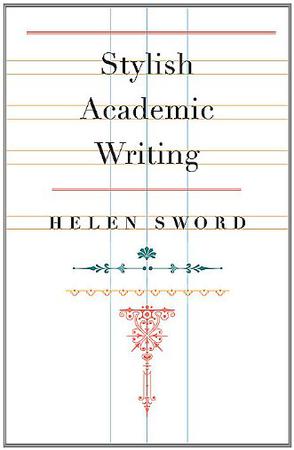
Stylish Academic Writing
Elegant data and ideas deserve elegant expression, argues Helen Sword in this lively guide to academic writing. For scholars frustrated with disciplinary conventions, and for specialists who want to write for a larger audience but are unsure where to begin, here are imaginative, practical, witty pointers that show how to make articles and books a pleasure to read - and to write. Dispelling the myth that you cannot get published without writing wordy, impersonal prose, Sword shows how much journal editors and readers welcome work that avoids excessive jargon and abstraction. Sword's analysis of more than a thousand peer-reviewed articles across a wide range of fields documents a startling gap between how academics typically describe good writing and the turgid prose they regularly produce. "Stylish Academic Writing" showcases a range of scholars from the sciences, humanities, and social sciences who write with vividness and panache. Individual chapters take up specific elements of style, such as titles and headings, chapter openings, and structure, and close with examples of transferable techniques that any writer can master. -

Stylish Academic Writing
Elegant data and ideas deserve elegant expression, argues Helen Sword in this lively guide to academic writing. For scholars frustrated with disciplinary conventions, and for specialists who want to write for a larger audience but are unsure where to begin, here are imaginative, practical, witty pointers that show how to make articles and books a pleasure to read - and to write. Dispelling the myth that you cannot get published without writing wordy, impersonal prose, Sword shows how much journal editors and readers welcome work that avoids excessive jargon and abstraction. Sword's analysis of more than a thousand peer-reviewed articles across a wide range of fields documents a startling gap between how academics typically describe good writing and the turgid prose they regularly produce. "Stylish Academic Writing" showcases a range of scholars from the sciences, humanities, and social sciences who write with vividness and panache. Individual chapters take up specific elements of style, such as titles and headings, chapter openings, and structure, and close with examples of transferable techniques that any writer can master. -
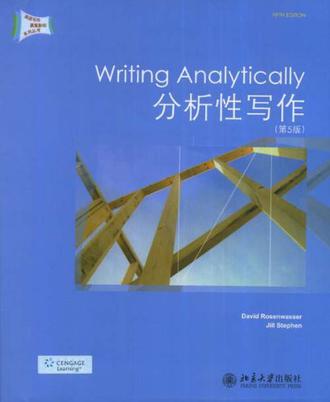
分析性写作
《分析性写作(第5版)》特色十分明显:(1)删除了第二版中的有关分析定义的5个相关章节,压缩了篇幅;(2)使重点更加突出,更加方便查找;(3)调整了部分章节的内容,如,将妨碍写作构思的习惯独立成章,加以全面论述;(4)在学术写作一章加入了有关的阅读建议。写作是重要的语言技能。分析写作是大学教育中使用最广的写作任务,是各门课程的基本要求。《分析性写作》第三版,反映出美国高校写作教学的最新发展动态,《分析性写作》2006年一出版,就非常畅销,2008年三次再版。 -
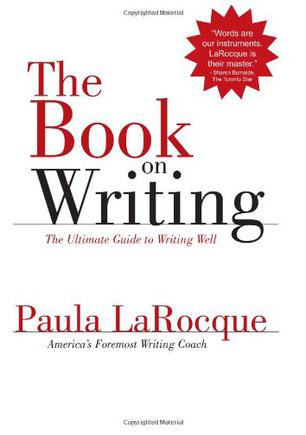
The Book on Writing
Many books attempt to teach the elements of good non-fiction writing, but only one does it in the gentle, humorous way of famous writing coach Paula LaRocque. LaRocque's new book is the result of a lifetime spent as a journalist and writing educator. This book contains 25 chapters in three sections. The first section spells out a dozen essential guidelines to good writing, from the importance of short sentences to the value of using a conversational tone. Section Two teaches the reader how to tell a story -- how to build suspense, how to effectively describe things, how to use literary devices. Section Three is a concise handbook on writing mechanics, such as grammar, usage, punctuation and style. Each section is loaded with illustrative examples of great non-fiction writing, and LaRocque's gentle humour makes reading a pleasure. This is LaRocque's gift to the writing world -- it is destined to become a classic. -
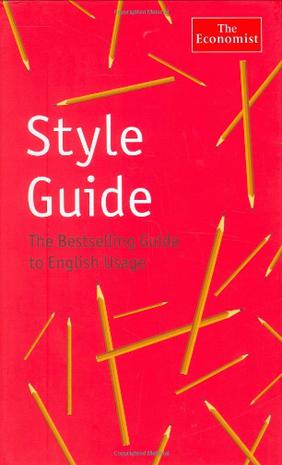
The Economist Style Guide
Rare is the style guide that a person--even a word person--would want to read cover to cover. But The Economist Style Guide, designed, as the book says, to promote good writing, is so witty and rigorous as to be irresistible. The book consists of three parts. The first is the Economist's style book, which acts as a position paper of sorts in favor of clear, concise, correct usage. The big no-noes listed in the book's introduction are: "Do not be stuffy.... Do not be hectoring or arrogant.... Do not be too pleased with yourself.... Do not be too chatty.... Do not be too didactic.... [And] do not be sloppy." Before even getting to the letter B, we are reminded that aggravate "means make worse, not irritate or annoy"; that an alibi "is the proven fact of being elsewhere, not a false explanation"; and that anarchy "means the complete absence of law or government. It may be harmonious or chaotic." Part 2 of the book describes many of the spelling, grammar, and usage differences between British and American English. While many Briticisms are familiar to most Americans and vice versa, there are some words--such as homely, bomb, and table--that take on quite different meanings altogether when they cross the Atlantic. And part 3 offers a handy reference to such information as common business abbreviations, accountancy ratios, the Beaufort Scale, commodity-trade classifications, currencies, laws, measures, and stock-market indices. The U.S. reader should be aware (but not scared off by the fact) that some of the style issues addressed are specifically British. --Jane Steinberg --This text refers to an out of print or unavailable edition of this title.